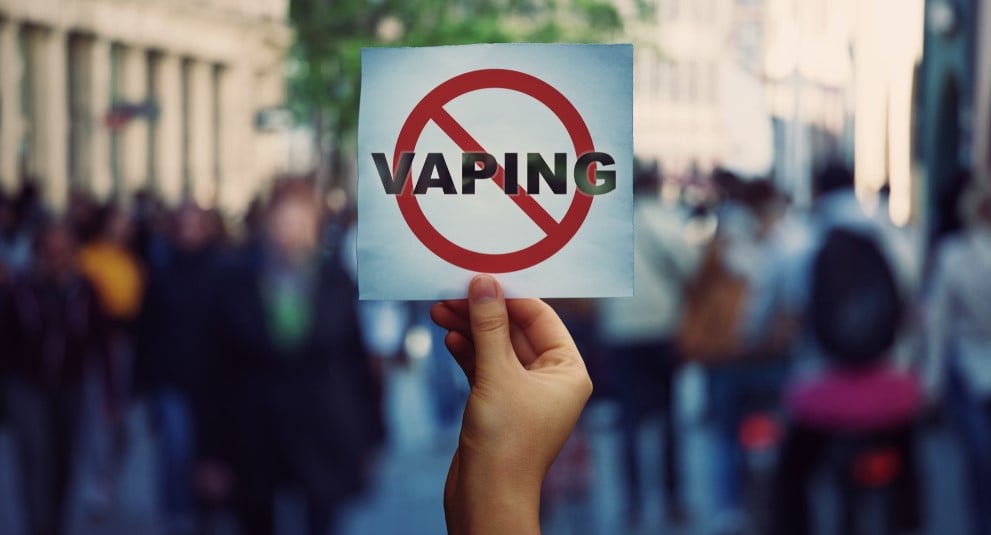Winston Tastes Good Like a Cigarette Should, The Marlboro Man, and Joe the Camel were used to make us believe smoking was safe, even glamorous. As a 6th grader at Fuller Elementary School in Minneapolis, I remember feeling stunned by a woman, a former smoker, who used an electrolarynx to speak to our class about the dangers of smoking. If you’ve never heard a person speak using an electrolarynx, watch Tips From Former Smokers from the Centers for Disease Control.
As I look back, I can still see a floor full of mesmerized sixth graders sitting “W” style, listening to the “Look-At-What-Smoking-Did-To-Me” speaker holding the electric-razor-like device to the hole in her windpipe to speak. The goal, I know now, was to “scare us straight,” and keep us away from cigarettes and the diseases doctors were discovering they caused. But, with our youthful sense of invincibility, before we knew it, we, too, were sampling those–as advertised–“slender, sexy, cool” cigarettes.
Today, a new delivery system of cigarettes with different names are on the market and, once again, young people are being coerced into using them. Juul and other e-cigarette companies calculatingly changed the verb from smoking to vaping, giving the impression that what we are inhaling is a water-like substance.
As in the 70’s, companies selling e-cigarette products are working to create the illusion that vaping is harm-free. Besides nicotine, the addictive ingredient found in cigarettes, some of these new “slender, sexy, cool” e–cigarettes contain THC (an ingredient in marijuana), and other additives like vitamin E acetate, plant oils, MCT (medium chain triglyceride oil) and others, according to research from the CDC. And, just like when we learned about the dangers of smoking cigarettes as 6th graders at Fuller School, here we are again, learning about the dangers and consequences of e-cigarettes. It is disappointing and shocking to witness yet another generation succumb to addiction, in part due to marketing, as well as nicotine’s sly hook.

Last June, Alexander Mitchell posted this on Instagram. Hospitalized because his lungs had stopped working, Mitchell was in Intensive Care on two life support systems and is lucky to be alive. Since his Insta post, 23 people in the U.S. have died due to lung illnesses related to vaping.
What can we do?
Educate.
Not wanting to sit idly by, Dr. Rose Marie Leslie, a 2nd year resident at the University of Minnesota is doing something about the vaping epidemic. Using the popular app TikTok, Dr. Leslie is educating teens about the dangers of vaping:
According to this article in Rolling Stone, Dr. Leslie provides real and relevant information with her down-to-earth personality:
While the information she presents is clinical,
her approach is breezy and straightforward:
“I just try to give people information the same way
I’d talk to my friends,” she says.
And it’s paid off: over the past few weeks,
since she started posting TikToks about vaping,
her follower count has increased by about 90,000.
One thing we can do is share Dr. Leslie’s vaping TikToks with students and kids to warn them about the dangers of e-cigarettes.
Listen.
In a conversation with social worker and therapist Jamie McNatt, I asked what teachers and parents can do to better communicate with kids. Without a nanosecond of hesitation, Jamie replied, listen. As parents and as teachers, she explained, there are times we simply TALK. TOO. MUCH. And, if we’re doing all of the talking, we are not doing enough of the listening. Listening, Jamie emphasized, is how we find out what kids are thinking and what they are doing. Ask your students and children about vaping, then listen to what they have to say.
Look.
Have you heard the term “hide in plain sight”? In a recent segment on NBC’s Today Show, journalists demonstrate how vaping tools are right in front of us. Disguised as phone chargers, markers, USBs, pens, watches, backpacks, even hoodies, keep your eyes out for vaping tools.
Learn.
There is a lot of information and misinformation concerning vaping. Some states have banned flavored vaping products, and each state in the U.S. has its own e-cigarette policy. In addition, legislators are working to regulate the sale of vaping products.
For more information about vaping and a list of curriculum resources, please click here.






